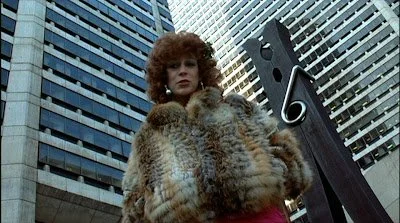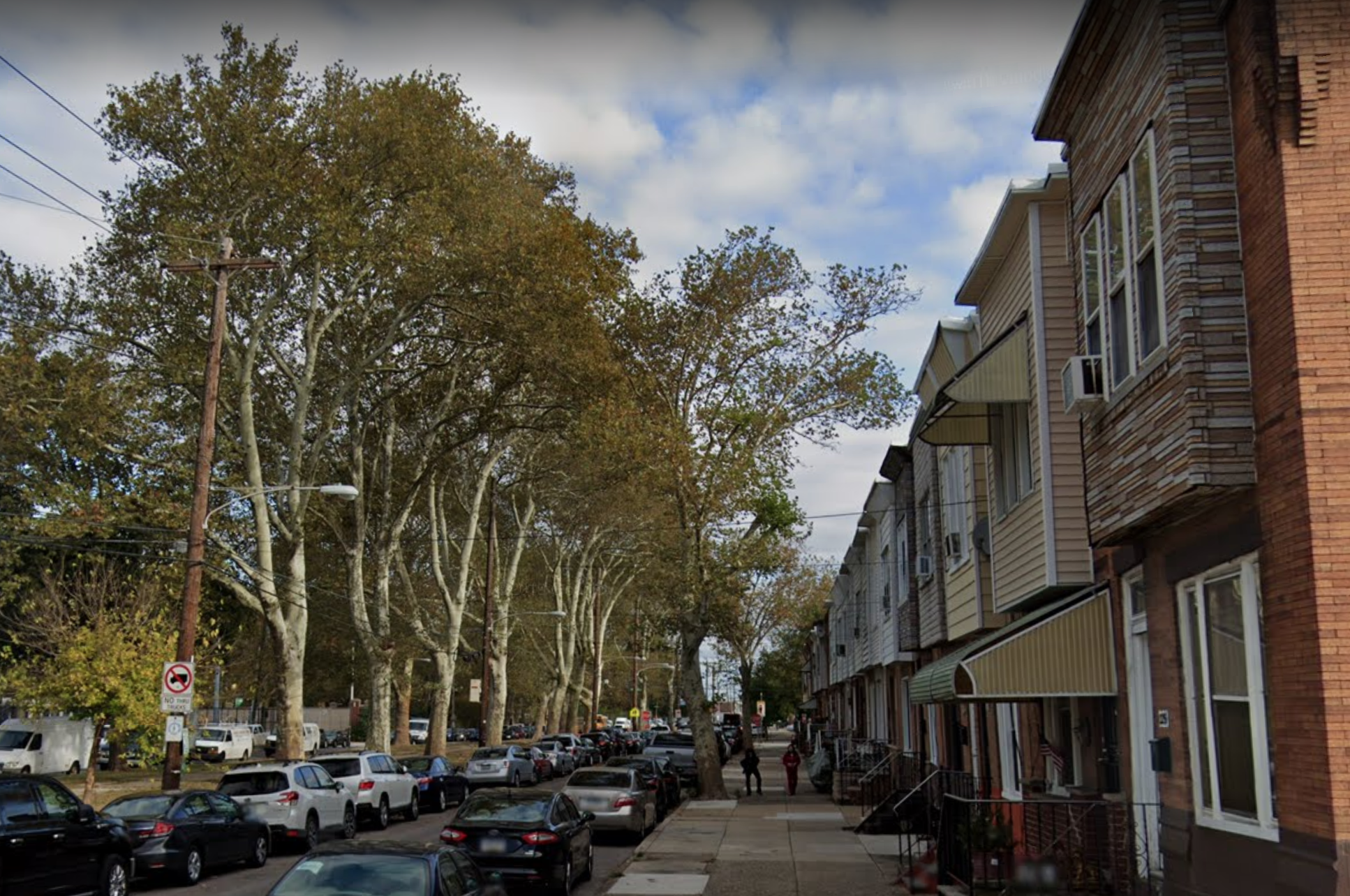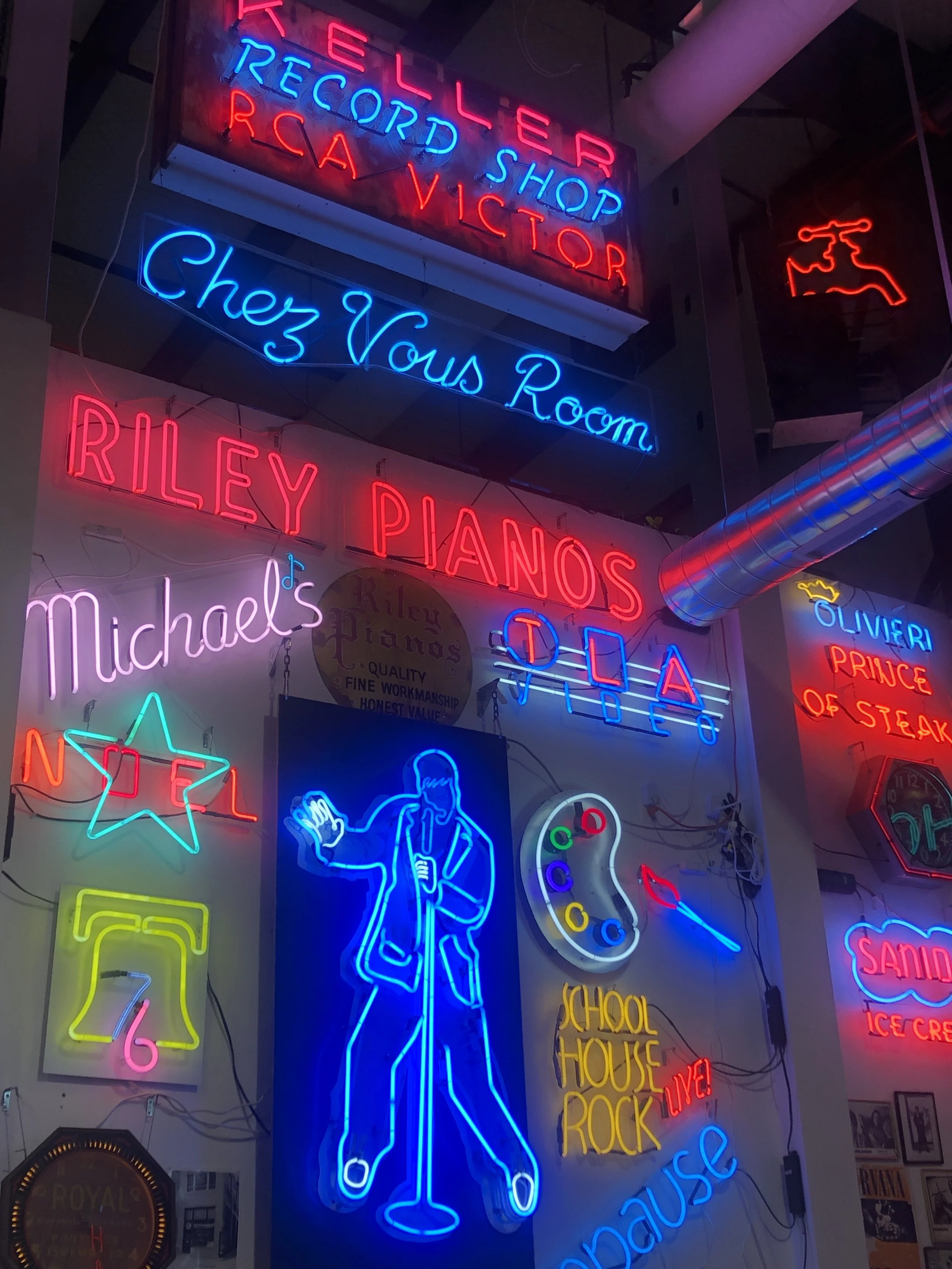On Claes Oldenburg’s Clothespin, And Us
Dueling icons: Jamie Lee Curtis and Clothespin, from Trading Places.
BY KIKI VOLKERT | Spend enough years living in Philly and you stop noticing the clothespin. Commute beneath it, breeze by it for a certain number of days and years, and the lines of its two identical legs blend into the facades of Centre Square that face it, yet another thrill of this city that eventually becomes a part of baseline daily existence.
But when you see the clothespin (officially named Clothespin) photographed in the countless obituaries of its creator Claes Oldenburg, who died on Monday at age 93, the craziness of the fact that this thing exists in Philadelphia, across the street from City Hall no less, comes into sharp focus and you can't help but appreciate it as if it were new.
Oldenburg, described by the L.A. Times as the most down-to-earth of the major Pop artists, is renowned for sculptures of household objects cast in enormous scale, such as a saw sawing into the Earth in Tokyo, an errant shuttlecock in Kansas City , an erect baseball bat in Chicago, and a quasi-superterranean bicycle in Paris. He's credited with democratizing art, making it accessible for consumption for the masses. You're being served either a joke with a straight face or a serious piece of art with an emergent smirk. But what difference does it make?
At face value, Clothespin, like all of Oldenburg's other sculptures, means nothing more than what you see. It's a momentary reprieve from life lived in the normal human scale — you're small and the thing is big when usually you're big and the thing is small, which is plain fun for everyone, and apt to be described as “whimsical,” as most of the obituaries about Oldenburg are doing. He said during a talk at the Philadelphia Museum of Art in 2001 that "the object is reduced to its absolute essentials and totally deprived of its function. In fact, it has a new function, which is to be the artistic object that it has become," which you could take to mean that it's meant to be a chance to pause to reflect on the ways that small tools impact the way we live.
Beyond face value, though, it's more, of course: Erected in 1976, the year of the bicentennial celebration, the clothespin's spring mimics the number 76. And the form of the thing itself, with two identical halves facing each other, references The Kiss by Constantin Brâncuși, a limestone sculpture depicting two symmetrical beings kissing and morphing into one, which is a part of the Philadelphia Museum of Art's collection.
To the Inquirer, in 2010, Oldenburg said, "Clothespin was the first city monument on a large scale that could compete with the architecture around it. That's what we were trying to do."
It's one of the crown jewels of public art in a city with a reputation for its public art, and it owes its existence to Phildelphia's Percent for Art program, which is an ordinance mandating that new construction or major renovation projects put aside one percent of their total budget for site-specific public art. Milord la Chamarre, the sculpture by French sculptor Jean Dubuffet, was a major influence on Oldenburg. That piece was long mounted less than a block away on Market Street between 15th and 16th Streets but was moved indoors to the atrium of Centre Square as part of its redesign in 2019.
Apparently, Philadelphia has more monumental sculptures by Oldenburg than any other city. Second to the clothespin in fame and notoriety is the paintbrush (officially named Paint Torch), housed in Lenfest Plaza next to PAFA on Broad Street. When it was unveiled, it got lots of people's (soiled?) panties in a bunch because the glob dripping off the end of the paintbrush "happens to sharply resemble fecal matter," according to the Inquirer. And it's true that it does, but we can't seem to find a reason to see that as a bad thing. Philly street artist Kid Hazo seems to agree, since in 2015 he added the appropriate facial features needed to turn it into a large real-life poop emoji.
The city also boasts the big button (officially named Split Button) on The University of Pennsylvania's campus and the huge outlet plug adapter (officially named Giant Three-Way Plug (Cube Tap) on the grounds behind the Philadelphia Museum of Art. With four large threading holes, apparently the button is supposed to represent the four historic squares of the city (Rittenhouse Square, Logan Square, Washington Square, and Franklin Square), with a split bisecting the button representing the Schuylkill River. And the outlet plug adapter might just be evidence of extraterrestrial life, according to Oldenburg, who said that "there was also the idea that this might have fallen from outer space."
The presentation of household objects as sculpture might seem innocuous, but Oldenburg did deeply consider the meaning of their placement in public space. One of his unrealized ideas was to replace the Washington Monument in Washington, D.C. with a pair of scissors. The handles would be underground and its blades would protrude upwards to the resemble the obelisk in its current form, but it would open and close throughout the day, because, he said, “like the scissors, the U.S.A. is screwed together, two violent parts destined in their arc to meet as one.” Other unrealized ideas include replacing the Statue of Liberty with a giant electric fan (to blow immigrants out to sea) and placing a giant rearview mirror in London’s Trafalgar Square to symbolize the county's backward-looking culture.
Cognizance of Oldenburg's intentionality with regard to place begs the question: What is the clothespin, which is not just a clothespin but the conjuring of the significance of the union of two separate prongs resembling lovers, intended to say, especially with its proximity to City Hall?
Only the average commuter, shopper, or casual walker traipsing around the legs of the clothespin can answer. And other artists, like Hank Willis Thomas, whose sculpture of an Afro pick titled All Power to All People has been seen by thousands at Thomas Paine Plaza, citing it Clothespin as a major influence, can take the question and make it their own, can usurp the conversation for the collective benefit.
Spend enough years living in a city with a robust public art program and you stop appreciating the magnificence of the sculptures that populate public space. If the clothespin serves as nothing more than a landmark that's OK, since, as William H. Whyte, American urbanist, sociologist, and journalist once said while looking at the clothespin, "You know where you are here. No other place you could be!"







